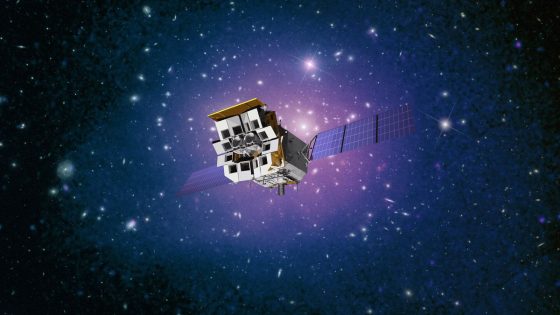A powerful nova explosion on a white dwarf star has intrigued astronomers worldwide. Detected on May 27, 2024, by the Chinese-European Einstein Probe, this event reveals a unique binary star system in the Small Magellanic Cloud, a satellite galaxy of our Milky Way. How can two stars with vastly different lifespans coexist? This discovery opens new avenues for understanding stellar evolution.
- Powerful X-ray light detected from nova explosion
- Einstein Probe launched to study high-energy universe
- Unusual binary star system with massive stars
- Stellar paradox: differing lifespans of stars
- Material exchange alters stellar evolution outcomes
- Potential for white dwarf to become supernova
Einstein Probe Captures Unusual Nova Explosion in Binary Star System
What does it mean when two stars with different lifespans share a cosmic dance? The Einstein Probe has identified a fascinating case of a massive “Be” star and a white dwarf star coexisting in a binary system. This discovery raises questions about the nature of stellar evolution and the interactions between massive stars.
Understanding the Stellar Paradox: Lifespan and Interaction of Stars
The intriguing relationship between the Be star, which is about 12 times the mass of our sun, and its companion white dwarf, challenges our understanding of stellar lifespans. Typically, a massive star like the Be star should explode as a supernova after about 20 million years, while a sun-like star transforms into a white dwarf over billions of years. How do these two stars coexist?
- The Be star and white dwarf exchange material, akin to cosmic “vampires.”
- Originally, the system likely contained two stars with masses of six and eight solar masses.
- The more massive star evolved faster, shedding layers and leaving behind a white dwarf.
- The white dwarf is now returning the favor, stealing material from the Be star, leading to nova explosions.
The Role of the Einstein Probe in Stellar Discovery
Launched in January 2024, the Einstein Probe is equipped with a Wide-field X-ray Telescope (WXT) that detects lower-energy X-rays. This capability allowed astronomers to pinpoint the source of the nova explosion in the Small Magellanic Cloud. What makes this telescope unique is its sensitivity to fleeting high-energy events, like the one observed.
The Future of the Binary Star System: A Race Against Time
The fates of the Be star and the white dwarf are now intertwined. As the white dwarf continues to accrete material, it risks exceeding the mass limit for stability, potentially leading to a Type Ia supernova. Conversely, the Be star’s eventual explosion could alter the dynamics of the system. Which star will outlast the other in this cosmic race?
This remarkable discovery not only enhances our understanding of stellar evolution but also emphasizes the complex interactions within binary star systems. As we continue to observe these celestial phenomena, who knows what other secrets the universe may reveal?

































